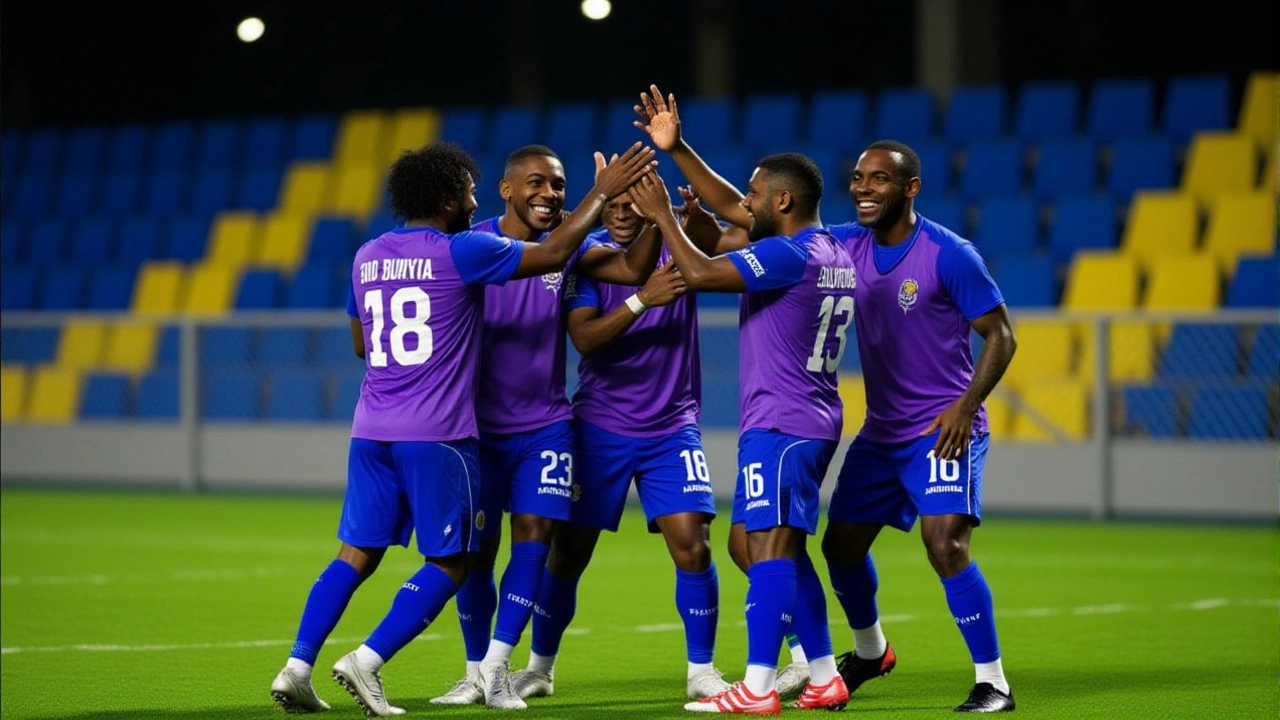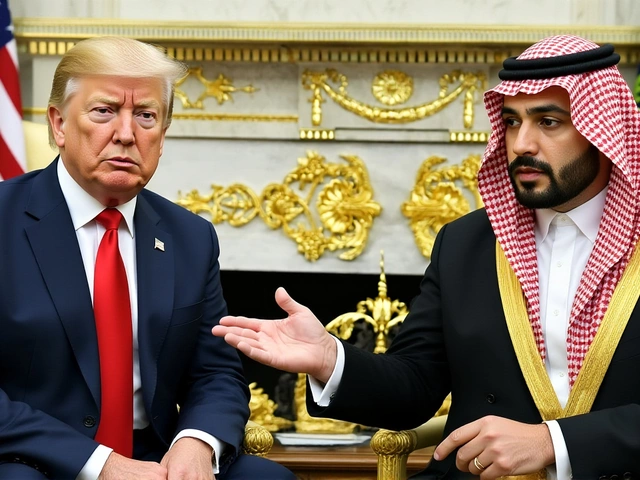It wasn’t a goal that ended their dreams—it was the silence after 99 minutes of frustration. On Matchday 6 of the CONCACAF Third Round San José, both Costa Rica and Honduras walked off the pitch at the Costa Rica National Stadium knowing they’d failed. The 0-0 draw wasn’t just a stalemate; it was the final nail in the coffin for two of Central America’s most storied football nations. Neither team qualified for the 2026 FIFA World Cup, marking the first time since 2006 that Honduras misses two World Cups in a row—and the first time since 1998 that Costa Rica does the same.
Why This Match Meant Everything
Honduras entered the game as group leaders, needing only a win to seal automatic qualification. Costa Rica? They needed a victory—and help. Haiti had to beat Nicaragua, and Canada had to hold off Panama. When Haiti’s 2-0 win over Nicaragua flashed across screens, Costa Rica’s fate was sealed. Even a win wouldn’t have been enough. But they didn’t even get that. The match, played under heavy rain and tense silence, lasted 99 minutes with no goals, no drama, no redemption.
Goalkeeper Keylor Navas, 38, was the lone bright spot. In the 42nd minute, he denied Marlon Ramirez’s thunderous rebound attempt with a fingertip save that sent the ball crashing off the crossbar. Fans in the stands held their breath. So did Navas. He’d been the backbone of Costa Rica’s last five World Cup runs. Now, he was the last man standing between his team and oblivion—and even he couldn’t do it alone.
The Players Who Could Have Changed It
Joel Campbell, Costa Rica’s veteran forward, had a shot deflected wide in the 67th minute. The ball kissed the post, then rolled harmlessly out. On the other side, Marlon Ramirez, Honduras’ pacey winger, had two clear chances in the 78th and 89th minutes. Both were saved by Navas. The crowd roared each time, but no goal came. The frustration boiled over when Costa Rica’s Luis Vega was called for a foul in the box in the 82nd minute. Players screamed. Replays showed his foot barely grazed the ground. The referee waved play on. “Full commitment,” one CBS Sports commentator noted. “But it looked like a foul.”
For Honduras, it was the same story. They had the ball. They had the momentum. But they lacked the finishing touch. Their last World Cup goal came in 2022. This match marked their 11th consecutive qualifier without a win against Costa Rica. The rivalry, known locally as El Clásico Centroamericano, has produced legends—but on this night, it produced only heartbreak.
A Shift in Central American Football
For decades, Costa Rica and Honduras were the region’s constants. Costa Rica reached the quarterfinals in 2014. Honduras shocked the world by qualifying in 2010 after a dramatic playoff win. Both were regulars in the Hexagonal. But now? Neither is in the top two of Group C. That’s not an accident. It’s a collapse.
CONCACAF’s qualification structure changed in 2022. The third round now has three groups of four teams. Only the top two advance. No more playoff lifelines. The system favors depth, youth, and consistency. Costa Rica’s squad? Average age: 31. Honduras’? 29. Neither team called up a single player under 22 in this qualifying cycle. Meanwhile, Canada, the United States, and Mexico developed young talent through MLS and European academies. Haiti, the surprise contender, fielded a squad with seven players under 24.
“We’re not just losing matches,” said former Costa Rican captain Bryan Ruiz in a post-match interview. “We’re losing relevance. The kids aren’t coming up. The system’s broken.”

What This Means for the Region
For the first time since 1998, neither Costa Rica nor Honduras will be in the World Cup. That’s not just a sporting loss—it’s cultural. In Honduras, football is religion. In Costa Rica, it’s national identity. The elimination has triggered protests in Tegucigalpa and San José. Social media trends show #FueraFENAFUTH and #CostaRicaSinFútbol trending. The federations—FENAFUTH and FEDEFUTBOL—now face pressure to overhaul youth programs, coaching licenses, and funding.
The CONCACAF federation, headquartered in Miami, has already signaled it will review its qualification format after the 2026 tournament. The goal? To prevent another double elimination of traditional powers. But the damage is done. The Caribbean and North American teams—Haiti, Jamaica, Canada, the U.S.—are pulling away. Central America is being left behind.
What’s Next?
The 2026 World Cup kicks off on June 11, 2026 across the U.S., Canada, and Mexico. Costa Rica and Honduras won’t be there. Their next chance? The 2030 qualifiers, starting in 2028. But without structural reform, the same mistakes will repeat.
Navas, who confirmed after the match he’ll retire from international play, leaves as a legend. Campbell, 34, may never wear the jersey again. For Honduras, Ramirez, 23, is the future—but he’s the only one. The question isn’t whether they’ll qualify next time. It’s whether they’ll have a team worth qualifying.

Background: A Legacy of World Cups
Costa Rica has appeared in six World Cups: 1990, 2002, 2006, 2014, 2018, and 2022. Their 2014 run to the quarterfinals remains one of the greatest underdog stories in tournament history. Honduras qualified in 1982, 2010, and 2014. They’ve never made it past the group stage—but they’ve always been there.
Now, both are gone. The last time Costa Rica missed two in a row? 1994 and 1998. Honduras? 1986 through 2006. This isn’t a setback. It’s a generational shift.
Frequently Asked Questions
Why did both teams fail to qualify despite being regional powerhouses?
Both nations relied on aging stars and failed to develop young talent. Costa Rica’s squad averaged 31 years old; Honduras’ was 29. Meanwhile, teams like Canada and Haiti fielded squads with multiple players under 24, benefiting from MLS and European academies. The CONCACAF qualifying format now rewards depth and consistency—something both federations neglected for years.
How did Haiti’s win over Nicaragua affect Costa Rica’s chances?
Haiti’s 2-0 victory eliminated Costa Rica’s path to qualification even if they won. Costa Rica needed a win plus a Haiti loss to have a shot at third place and a playoff spot. Haiti’s win secured their own qualification, closing the door on Costa Rica’s slim mathematical chance. The result was confirmed live during the match, triggering immediate despair among fans.
What role did Keylor Navas play in the match?
Navas made three critical saves, including a stunning stop on Marlon Ramirez’s rebound just before halftime. At 38, he was the only player on either side who consistently prevented goals. His performance was widely praised, but he couldn’t single-handedly carry the team. It was his final international match, and he left with a record of 110 caps and no World Cup appearances since 2022.
What’s the impact on CONCACAF’s future qualification format?
CONCACAF is expected to review its third-round structure after 2026. The current format, which eliminates playoff paths for third-place teams, has been criticized for punishing traditional powers like Costa Rica and Honduras. Officials are considering adding a fourth automatic qualifier or reintroducing a playoff round to keep regional rivals in contention longer.
When will Costa Rica and Honduras next have a chance to qualify?
Their next opportunity begins in 2028 for the 2030 World Cup. But without sweeping reforms—youth development, coaching upgrades, and increased funding—they’re likely to remain on the outside looking in. The 2030 tournament, hosted by Morocco, Spain, and Portugal, will be the first with 48 teams, but qualification will be more competitive than ever.
Is this the end of Central American football dominance in CONCACAF?
Not the end—but the end of an era. Mexico, the U.S., and Canada now dominate. Haiti and Jamaica are rising. Central America’s decline isn’t due to lack of passion—it’s due to institutional neglect. Without investment in grassroots programs and professional infrastructure, the region risks becoming a footnote in North American football history.



